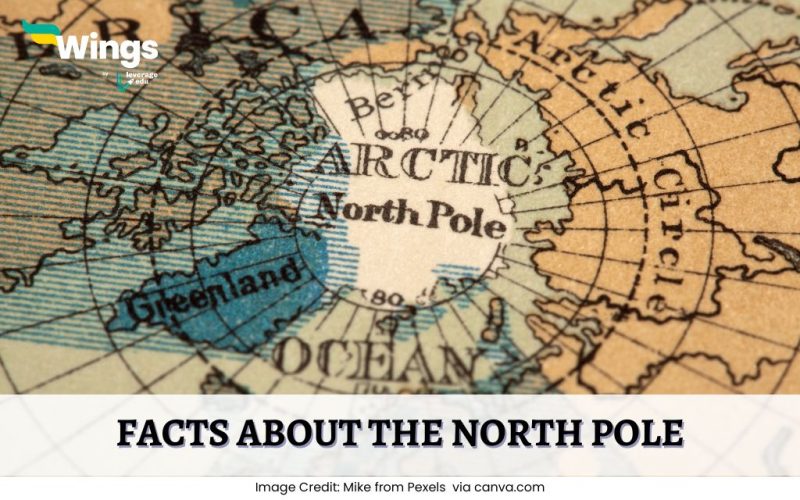The North Pole, Earth’s northernmost point, is a region steeped in mystery and wonder. Located at the top of the world, it serves as a pivotal point for our planet’s rotation and has been the subject of exploration and fascination for centuries. Understanding the unique characteristics of the North Pole not only satisfies curiosity but also highlights the remarkable features of our planet’s geography and environment.
Table of Contents [show]
1. The North Pole Lacks Permanent Land
Unlike Antarctica, which is a continent surrounded by ocean, the North Pole is situated in the middle of the Arctic Ocean amidst waters that are almost permanently covered with constantly shifting sea ice. This means there’s no solid landmass at the pole, just a thick layer of ice floating atop the ocean.
2. A Single Sunrise and Sunset Each Year
At the North Pole, the sun rises just once a year, at the March equinox, and sets once at the September equinox. This results in six months of continuous daylight followed by six months of darkness, a phenomenon unique to polar regions.
3. No Official Time Zone
All longitudinal lines converge at the North Pole, making traditional timekeeping irrelevant. As a result, there’s no assigned time zone, and expeditions often use the time zone of their departure point for convenience.
4. Extreme Cold Temperatures
Winter temperatures at the North Pole can plummet to around -40°F (-40°C), while summer temperatures hover near the freezing point, rarely exceeding 32°F (0°C). These harsh conditions make it one of the coldest places on Earth.
5. Magnetic North vs. Geographic North
The Geographic North Pole differs from the Magnetic North Pole, which is the point that compasses point toward and is located south of the Geographic North Pole. The Magnetic North Pole moves due to changes in Earth’s magnetic field.
6. International Waters
The North Pole isn’t owned by any country and is situated in international waters. However, surrounding nations have made territorial claims in the Arctic region, primarily for potential natural resources.
7. Unique Wildlife
While the North Pole itself has sparse wildlife due to its icy environment, the broader Arctic region is home to polar bears, Arctic foxes, and various seal species. These animals have adapted to the extreme conditions of the Arctic.
8. Drifting Ice Sheets
The ice at the North Pole is constantly moving due to ocean currents and wind patterns. This drift can make establishing permanent research stations challenging, as they move over time.
9. Depth of the Arctic Ocean
Beneath the North Pole, the Arctic Ocean reaches depths of over 13,000 feet (4,000 meters). This deep basin is covered by sea ice that varies in thickness throughout the year.
10. First Verified Expedition
The first undisputed expedition to reach the North Pole was by the Norwegian explorer Roald Amundsen in 1926, aboard the airship Norge. Earlier claims, such as that of Robert Peary in 1909, have been subject to controversy.
FAQs
No, the North Pole is situated in the Arctic Ocean at the northernmost point of Earth, while Antarctica is a continent located around the South Pole at Earth’s southernmost point.
There are no permanent human residents at the North Pole due to its extreme conditions. However, scientists establish temporary research stations during certain times of the year.
The North Pole isn’t part of any country and lies in international waters. Nonetheless, countries like Russia and Canada have made territorial claims in the Arctic region.
No, the North Pole isn’t situated on land; it’s located in the Arctic Ocean, covered by shifting sea ice without any underlying landmass.
Read more interesting facts here!
| 100 Interesting Facts About Earth | Cool Facts about Norway |
| 47+ Interesting GK Facts in English | Top 20 Fun Facts About Antarctica |
| 10 Psychological Facts About Personality | 25+ Unknown Facts about Iceland |
These interesting facts about North Pole offer an insight into its unique and intriguing nature, highlighting its significance in Earth’s geography and climate systems. If you wish to read more interesting facts about anything or everything in this world. Stay tuned to the General Knowledge page of Leverage Edu.
 One app for all your study abroad needs
One app for all your study abroad needs















 45,000+ students trusted us with their dreams. Take the first step today!
45,000+ students trusted us with their dreams. Take the first step today!
